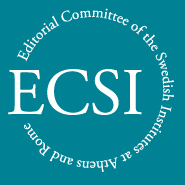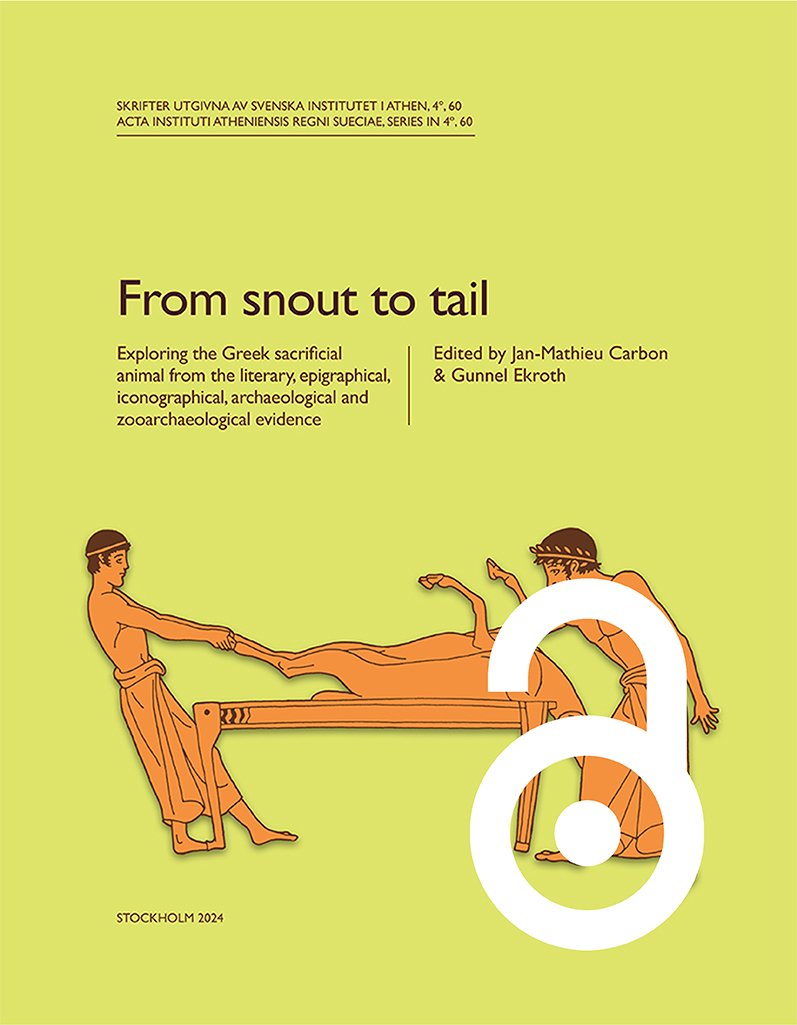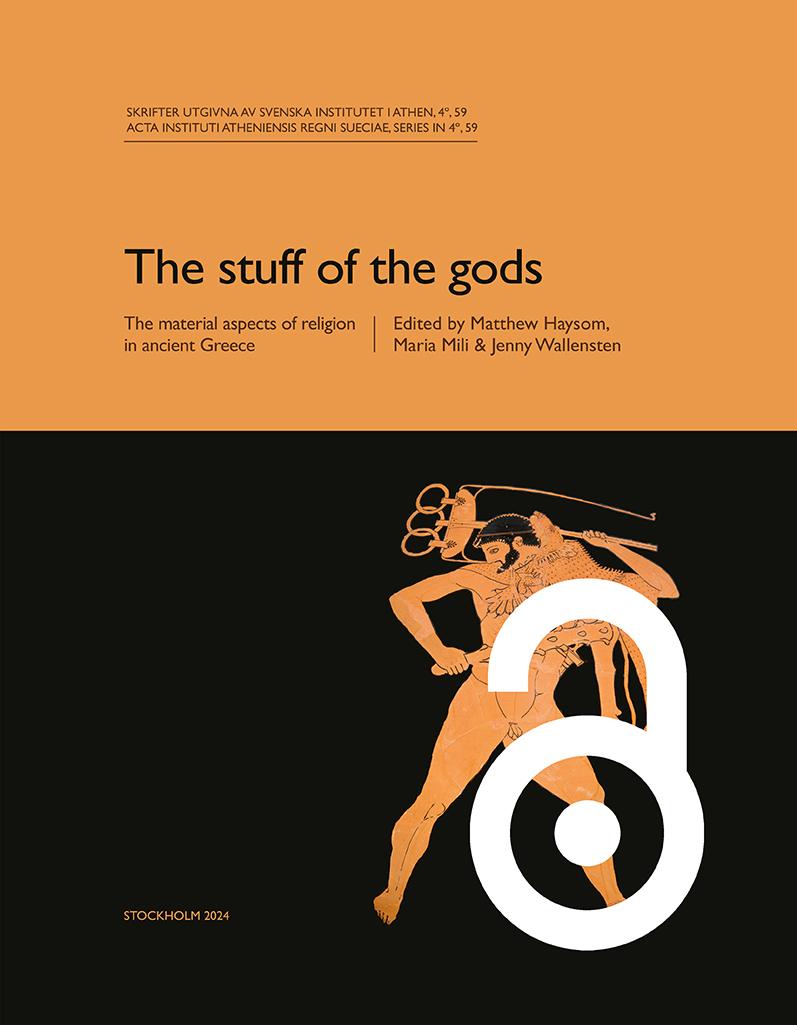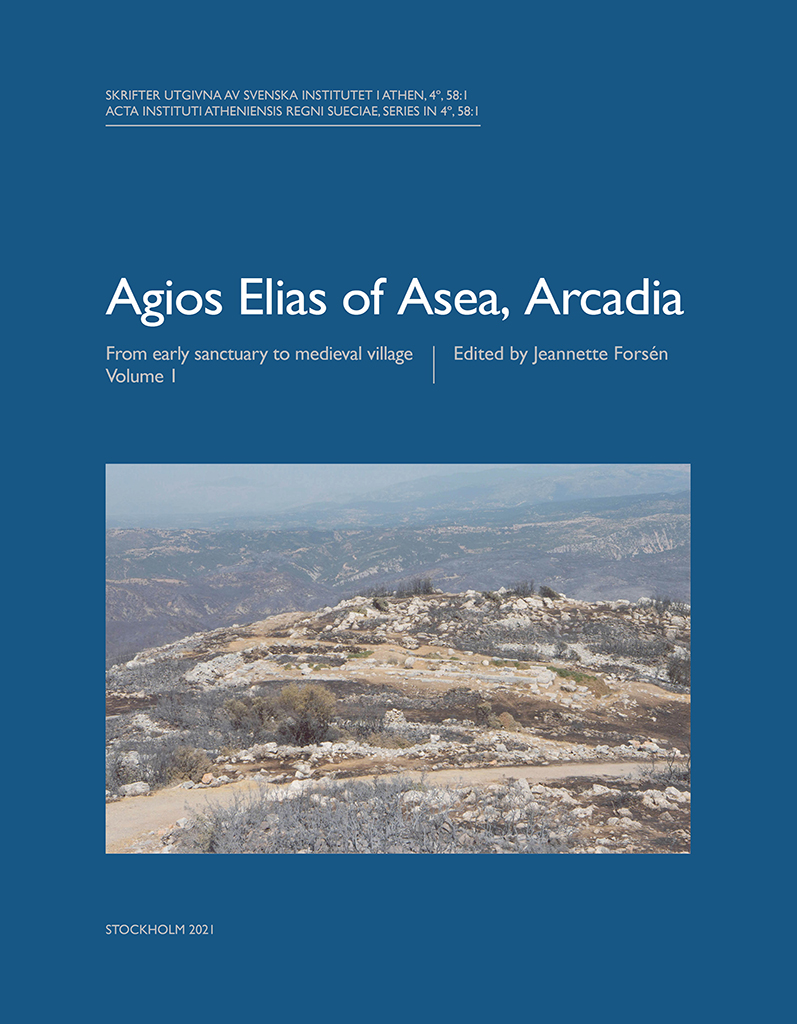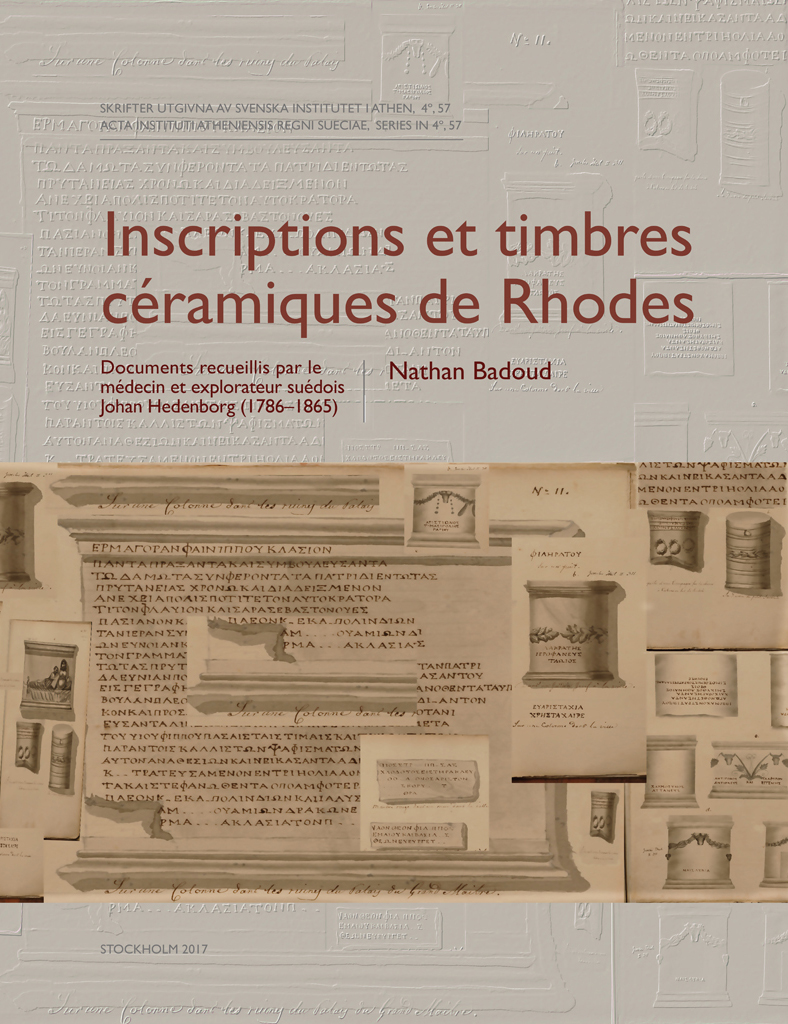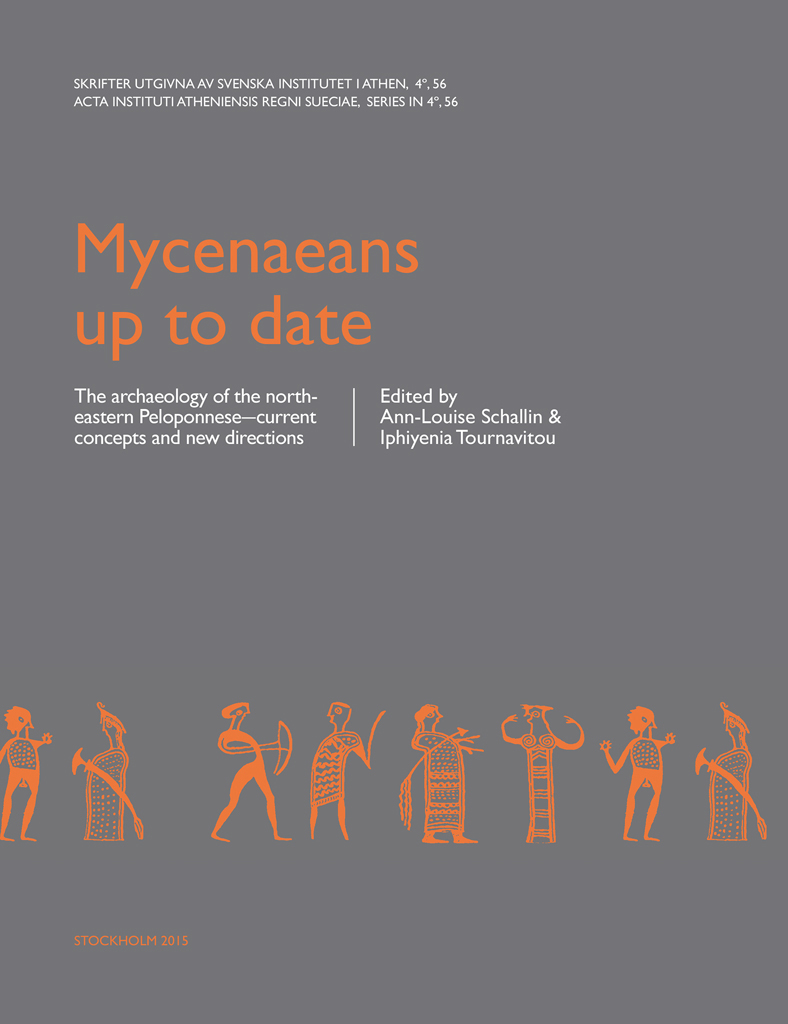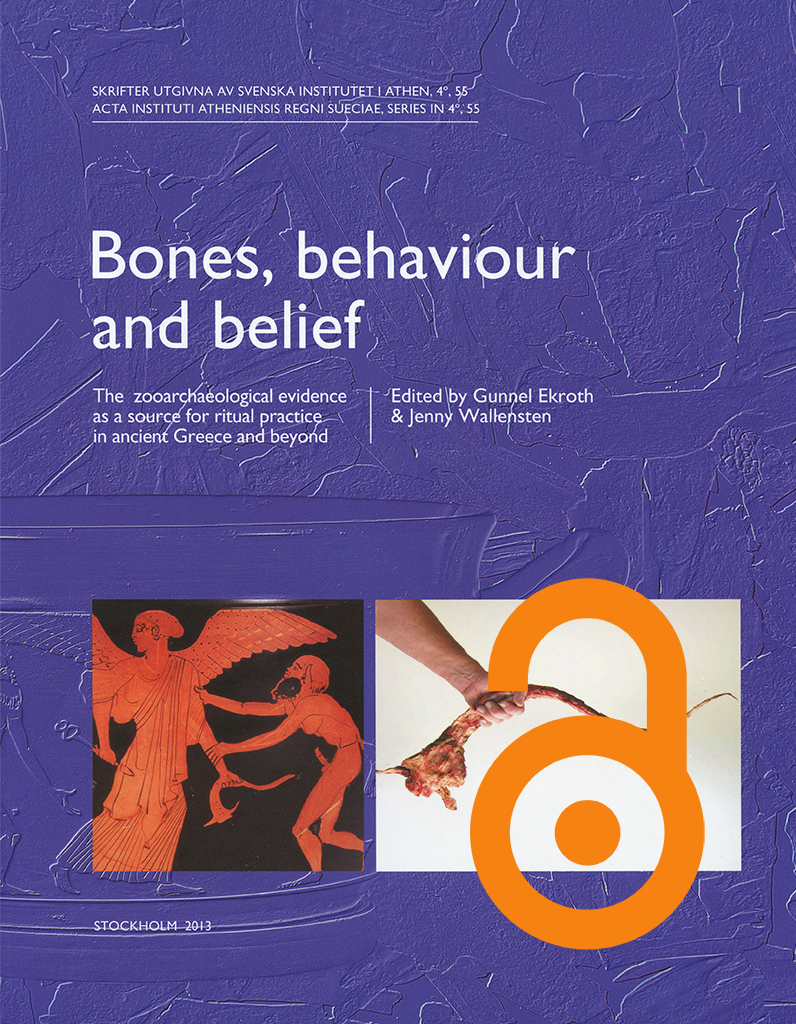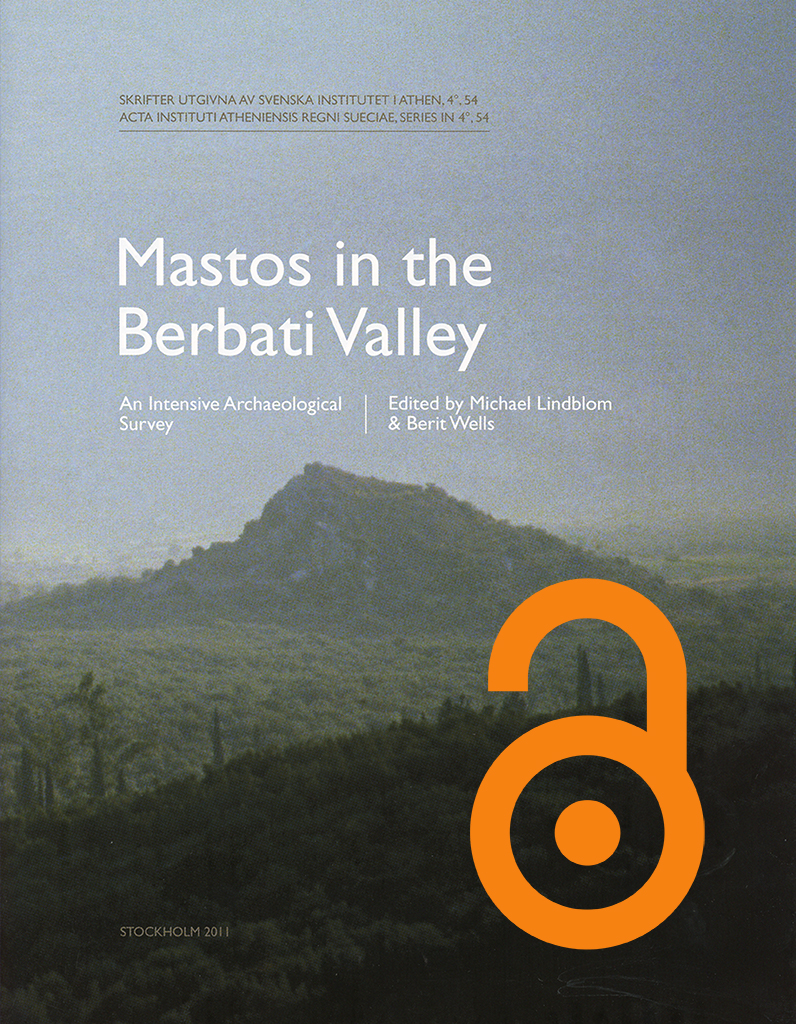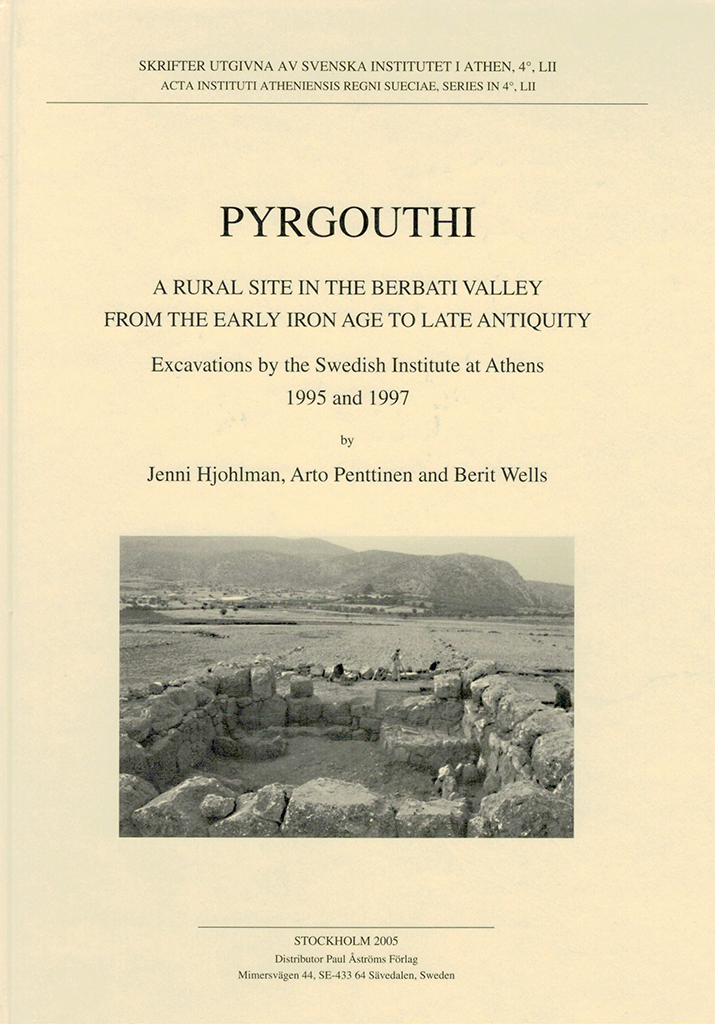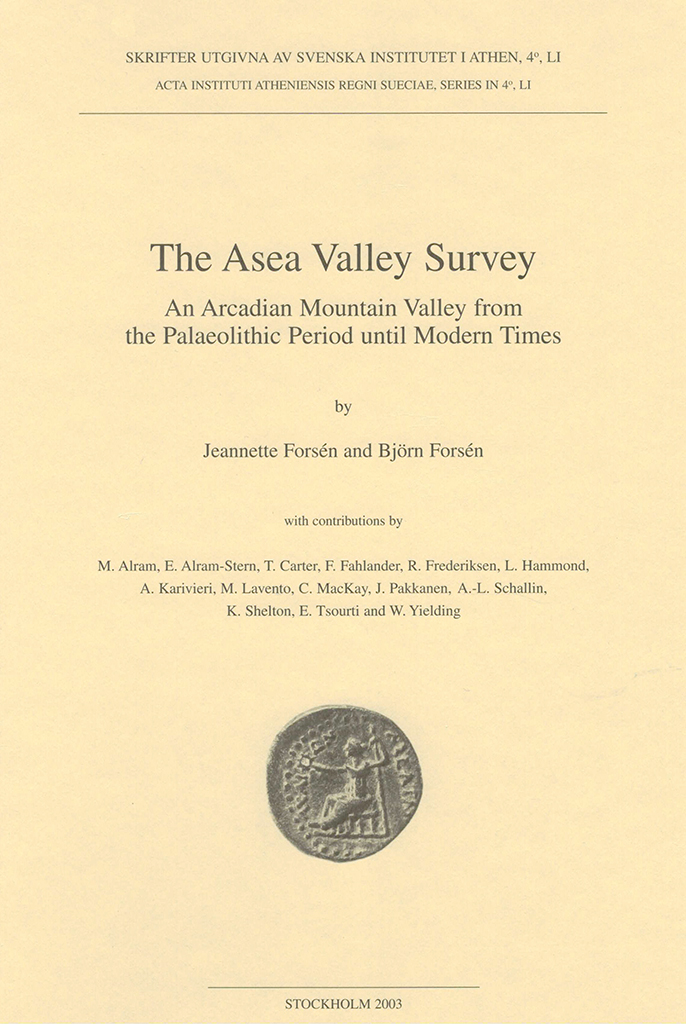Published by the Swedish Institute at Athens. Distributed by Eddy.se AB. All content is available with open access, use links below. From snout to tail. Exploring the Greek sacrificial animal from the literary, epigraphical, iconographical, archaeological, and zooarchaeological evidence Edited by Jan-Mathieu Carbon & Gunnel Ekroth https://doi.org/10.30549/actaath-4-60 Animal sacrifice fundamentally informed how the ancient Greeks defined themselves, their relation to the divine, and the structure of their society. Adopting an explicitly cross-disciplinary perspective, the present volume explores the practical execution and complex meaning of animal sacrifice within ancient Greek religion (c. 1000 BC–AD 200). The objective is twofold. First, to clarify in detail the use and meaning of body parts of the animal within sacrificial ritual. This involves a comprehensive study of ancient Greek terminology in texts and inscriptions, representations on pottery and reliefs, and animal bones found in sanctuaries. Second, to encourage the use and integration of the full spectrum of ancient evidence in the exploration of Greek sacrificial rituals, which is a prerequisite for understanding the complex use and meaning of Greek animal sacrifice. Twelve contributions by experts on the literary, epigraphical, iconographical, archaeological and zooarchaeological evidence for Greek animal sacrifice explore the treatment of legs, including feet and…
Published by the Swedish Institute at Athens. Distributed by Eddy.se AB. All content is available with open access, use links below. The stuff of the gods. The material aspects of religion in ancient Greece Edited by Matthew Haysom, Maria Mili & Jenny Wallensten https://doi.org/10.30549/actaath-4-59 The “material turn” in the humanities and social sciences has brought about an expanded understanding of the material dimension of all cultural and social phenomena. In the Classics it has resulted in the breaking down of boundaries within the discipline and a growing interest in materiality within literature. In the study of religion cross-culturally new perspectives are emphasising religion as a material phenomenon and belief as a practice founded in the material world. This volume brings together experts in all aspects of Greek religion to consider its material dimensions. Chapters cover both themes traditionally approached by archaeologists, such as dedications and sacred space, and themes traditionally approached by philologists, such as the role of objects in divine power. They include a wide variety of themes ranging from the imminent material experience of religion for ancient Greek worshippers to the role of material culture in change and continuity over the long term. Chapter abstracts and author affiliations…
Published by the Swedish Institute at Athens. Distributed by Eddy.se AB. Agios Elias of Asea, Arcadia Vol. 1. Agios Elias of Asea, Arcadia. From early sanctuary to medieval village Edited by Jeannette Forsén Abstract A brief four-week excavation campaign in 1997 at the temple on top of the mountain of Agios Elias at Asea produced abundant archaeological material which partly is presented in this study, along with a stratigraphic report of part of the excavated area. The pottery, miniature vessels, miscellaneous terracotta finds, roof tiles, faunal and human bones, glass, coins, sculpture and miscellaneous stone objects are included in the present work. The first focus of activities at the site took place around c. 720–690 BC (Early Protocorinthian). No architecture was found in connection with this period. However, roof tiles of a temple and some auxiliary buildings from c. 590–560 BC (Middle Corinthian–Late Corinthian I) are accompanied by a large amount of pottery which point at a second floruit of the site during this period. Some of the pottery is local/regional, with other examples originating from many parts of southern Greece in addition to Attica and possibly East Greece as well. During the 14th century AD a village, named Kandreva,…
Published by the Swedish Institute at Athens. Distributed by Eddy.se AB. Inscriptions et timbres céramiques de Rhodes. Documents recueillis par le médecin et explorateur suédois Johan Hedenborg (1786–1865) By Nathan Badoud Abstract Johan Hedenborg (1786–1865) was a medical doctor whose curiosity gave him a wide interest in natural and social science. In 1825, he was attached to the embassy of Sweden and Norway to the Sublime Porte. After exploring the Aegean and both sides of the Red Sea for fifteen years, he settled in Rhodes with the aim of writing a history of the island. The manuscript, completed in 1857, was never published. It contains copies of 303 inscriptions on stone, 54 of them otherwise unknown, and drawings of more than 150 stamped amphora handles and tiles. All these documents are studied here. Bibliographical information Nathan Badoud, Inscriptions et timbres céramiques de Rhodes. Documents recueillis par le médecin et explorateur suédois Johan Hedenborg (1786-1865) (Skrifter utgivna av Svenska institutet i Athen, 4°, 57), Stockholm 2017. ISSN 0586-0539. ISBN 9789179160654. Hard cover, 145 pages. Reviews Anzeiger für die Altertumswissenschaft 70, 2017, 6-8 (C. Barker) Bryn Mawr Classical Review 2018.08.02 (Lucia Criscuolo) The Classical Review 69:2, 2019, 664–666 (Nicholas K. Rauh) Dialogues…
Published by the Swedish Institute at Athens. Distributed by Eddy.se AB. Mycenaeans up to date. The archaeology of the northeastern Peloponnese—current concepts and new directions Edited by Ann-Louise Schallin & Iphiyenia Tournavitou Abstract This volume contains the proceedings of the conference Mycenaeans up to date: The archaeology of the north-eastern Peloponnese—current concepts and new directions, which was held 10–16 November 2010, under the auspices of the Swedish Institute at Athens. The published papers reveal the latest news in the field of Mycenaean archaeology in the Argolid and the surrounding areas. Ongoing fieldwork, as well as new interpretations of the extant archaeological material is presented and discussed in detail. The first part of the volume consists of papers dealing with new, unpublished evidence regarding many of the well-known Argive sites, including Mycenae, Tiryns, Argos, Midea, and the Nemea Valley, among others. The second part is devoted to in-depth studies on a number of major themes, such as Mycenaean architecture, administration, mortuary practices and religion. Contents Ann-Louise Schallin & Iphiyenia Tournavitou, ‘Introduction’ The Argolid Mycenae Elizabeth French, ‘Tending the past, ensuring the future’ Kim Shelton, ‘Pottery and Petsas House: Recent research on LH IIIA2 Mycenae’ Iphiyenia Tournavitou, ‘The East House in the…
Published by the Swedish Institute at Athens. Distributed by Eddy.se AB. All content is available with open access, use links below. Bones, behaviour and belief. The zooarchaeological evidence as a source for ritual practice in ancient Greece and beyond Edited by Gunnel Ekroth & Jenny Wallensten https://doi.org/10.30549/actaath-4-55 Abstract The importance of the zooarchaeological evidence as a source for ritual practices in ancient Greece is gradually becoming widely recognized. Animal bones form the only category of evidence for Greek cult which is constantly significantly increasing, and they can complement and elucidate the information provided by texts, inscriptions and images. This volume brings together sixteen contributions exploring ritual practices and animal bones from different chronological and geographical perspectives, foremost ancient Greece in the historical period, but also in the Bronze Age and as early as the Neolithic period, as well as Anatolia, France and Scandinavia, providing new empirical evidence from a number of major sanctuaries and cult-places. On a methodological level, the complexity of identifying ritual activity from the zooarchaeological evidence is a recurrent theme, as is the prominence of local variation visible in the bone material, suggesting that the written sources and iconography may offer simplified or idealized versions of the…
Published by the Swedish Institute at Athens. Distributed by Eddy.se AB. All content is available with open access, use links below. Mastos in the Berbati Valley. An intensive archaeological survey Edited by Michael Lindblom & Berit Wells Abstract This study presents the results of a small but intensive surface survey conducted on the Mastos Hill in the Berbati Valley in 1999. While remains from the Early and Late Helladic period were known from previous excavations on its southern and eastern slopes, this is the first analysis of the entire hill. It includes a digital documentation of the local topography as well as an account of the archaeological remains retrieved in the field. The study fills a gap in different data sets and results gained through old excavations and the extensive 1988–1990 Berbati-Limnes survey. The introductory chapter summarizes previous work in the valley, discusses its ancient routes of communication and outlines the method employed in the archaeological survey. This is followed by an account of the topographical survey and the geographical information system used. In the six following chapters the archaeological remains are presented and analyzed in a diachronic fashion. It is concluded that the hill was predominantely settled in prehistory…
Published by the Swedish Institute at Athens. Distributed by Astrom Editions. Pictorial pursuits. Figurative painting on Mycenaean and Geometric pottery. Papers from two seminars at the Swedish Institute at Athens in 1999 and 2001 Edited by Eva Rystedt & Berit Wells Bibliographical information Eva Rystedt & Berit Wells, eds, Pictorial pursuits. Figurative painting on Mycenaean and Geometric pottery. Papers from two seminars at the Swedish Institute at Athens in 1999 and 2001 (Skrifter utgivna av Svenska institutet i Athen, 4°, 53), Sävedalen 2006. ISSN 0586-0539. ISBN 9789179160531.
Published by the Swedish Institute at Athens. Distributed by Astrom Editions. Pyrgouthi. A rural site in the Berbati Valley from the Early Iron Age to Late Antiquity. Excavations by the Swedish Institute at Athens 1995 and 1997 By Jenni Hjohlman, Arto Penttinen & Berit Wells, with contributions by Yannis Bassiakos, Katie Theodorakopoulou, Hero Granger-Taylor, Sven Isaksson, Petros Lymberakis, Dimitra Mylona, Maria Ntinou, Anaya Sarpaki & George Syrides Abstract This volume presents the results of the excavations in 1995 and 1997 at Pyrgouthi in the Berbati Valley, Argolis, Greece. The toponym is the local denomination for a Hellenistic tower, which has always been a prominent in the landscape. In the surface survey of the valley in 1988–1990 the tower was perceived as part of a Classical farmstead and in the ensuing excavation project it was targeted as such. However, the excavations revealed that this interpretation corresponded to but a fraction of the truth. The tower had been built on a knoll in the center of the valley but the earliest human activities at the site can be dated to the end of the Early Iron Age or the eight century BC. At this point in time, Arto Penttinen argues, the archaeological…
Published by the Swedish Institute at Athens. Distributed by Astrom Editions. The Asea Valley Survey. An Arcadian mountain valley from the Paleolithic period until modern times By Jeannette Forsén & Björn Forsén, with contributions by Michael Alram, Eva Alram-Stern, Tristan Carter, Fredrik Fahlander, Rune Frederiksen, Leslie Hammond, Arja Karivieri, Mika Lavento, Camilla MacKay, Jari Pakkanen, Ann-Louise Schallin, Kim S. Shelton, Eos Tsourti & Wendy Yielding Abstract This volume presents the finds of the Asea Valley Survey (AVS) carried out 1994–1996 in a mountain valley of Arcadia with the acropolis of Asea, the Palaeokastro, as its focal point. During these three seasons of archaeological surface survey 18.7 km2 of the valley were searched intensively in foot. Artefacts spanning from the Middle Palaeolithic period to the early 19th century were systematically collected and documented. Concurrently a geological team gathered data concerning the ever-changing landscape of the valley. By combining new archaeological and geological data with ancient, Byzantine, Ottoman and Venetian written sources the diachronic history of the Asea valley was reconstructed. Through the discovery of a Middle–Upper Palaeolithic site the regional history has been pushed back to about 50,000 BP. Furthermore, a handful of Early–Middle Neolithic lakeside sites, which produced nothing but…
